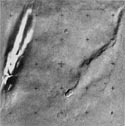QUOTE (JonClarke @ Nov 11 2006, 08:30 AM)

In your opinion is this true of the Phobos Grunt mission also?
My words on this subject here are just the second-hand testimony, so my personal opinion is of no value.
The same source as above claimed that assembly of Phobos-Grunt craft is gradually carried out, though it is not work of high internal priority for Lavochkin and it was repeatedly stalled during last years. After multipe delays, re-plannings etc., noone could get qualified estimate of a-priory success ratio. There is lots of scepsis about this project. But the situation is different from Luna-Glob.
As I was informed, modern Lavochkin projects could be roughly devided to three parts.
First, alive ones with approximately clean perspective, include Spectr-R and Electro-L.
Second are half-alive, Phobos-Grunt and Spectr-UF among them.
3rd, "Luna-Glob", "Resonans" and "Spectr-M" were characterized as programs, existence of which "became known to Lavochkin collaborators from newspapers" and "to this list one could easily append landing on the surface of Sun and delivery of samples from Pluto".



